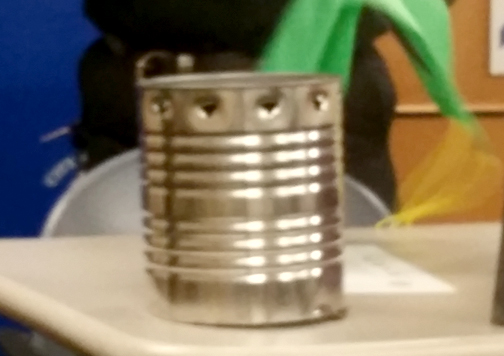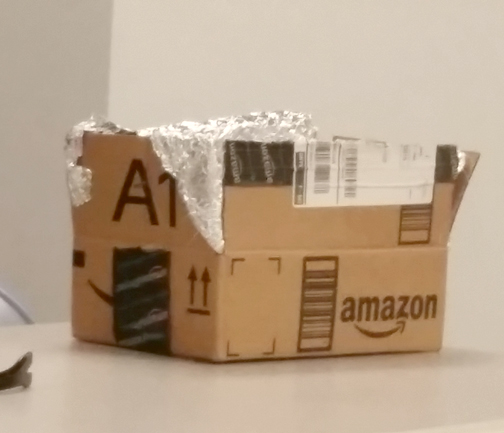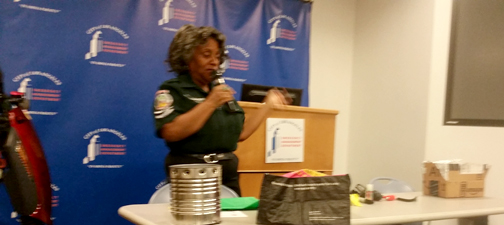It pays to be prepared knowing what damage earthquakes can do. “Preppers” – those who are prepared for the possibility of a disaster – probably don’t mind spending hundreds or even thousands of dollars on somewhat costly items in retail stores or catalogues. The City of Los Angeles’ Emergency Management Dept. provides a comprehensive list at www.readyla.org of items every household should have nearby to get through disasters that could curtail access to stores, money and roadways.
But folks can also put together their own emergency preparedness supplies with many items that may already be on hand, as well as inexpensive dollar store items.
At a recent meeting of the Neighborhood Council Emergency Preparedness Alliance, Lorraine Curry, coordinator of CERT Battalion 13, pointed out how easy it is to make a solar oven out of a tin can with holes punched in it or by using a simple cardboard box lined with tin foil and topped with a piece of glass to cook or warm food in the sun.

Another simple invention that one could make is a porta potty using trash bags inside a five-gallon bucket. A flexible inflation device, like a child’s floatation device (commonly used in a swimming pool), to line the edges can be used or something fashioned out of a piece of wood to sit on. (For those who prefer comfort, a toilet seat can be purchased from an emergency preparedness supplier for a marginal price.)
Important documents that residents don’t want to lose (ID cards, passports, insurance papers, emergency phone numbers, banking or medical records, and photos of pets or family members) should be double-bagged in a freezer bag and stored in the freezer. In the event of a fire or earthquake, a freeze will withstand a lot of damage and documents will be maintained.
As far as items to stock in an emergency bag in a car and home, here are some common essential items: a first aid kit with gauze and bandages, candles and matches, sturdy gloves and boots, extra clothing, emergency supplies of food and water, trash bags and duct tape, toilet paper, blankets, medication, an emergency radio with extra batteries or, even better, one that can be cranked for power and does not require batteries, a lantern and flashlight, and tools such as a crowbar to open windows or doors should they become stuck.
In addition to stocking up on food for oneself and family, also have extra food and water on hand for pets.
Now is the right time to secure any bookshelves or loose items on the wall so they don’t go airborne and hurt someone in a shaker. (Never hang heavy objects over a bed.)
Keep a supply of small bills ready to use because stores will not have power to operate cash registers and having cash will be a lifesaver if more food or water are needed. It’s generally suggested that individuals keep $300 on hand but for families that could translate to $500 or more in cash.

Drivers should always keep half a tank of gas in their cars as gas might not be available in a crisis.
Hang a whistle on a keychain and use it if help is needed. This will provide a better chance of being found by first responders.
Hang any flashlights by a light switch so they can be found if the power goes out. And always check the batteries every few months to make sure they are working.
Continually rotate emergency food every six months from emergency supplies to the home pantry. That way, whatever is purchased for an emergency or crisis is fresh and palatable. Power bars are inexpensive and last a long time but there are many items that can be found at a dollar store that will contain preservatives and be useful in an emergency.
Finally, if an earthquake strikes, these things should be done:
• If gas is smelled and a gas leak is suspected, turn off the gas.
• Fill a bathtub with cold water so water is available, should the lines be contaminated.
• If sewage seeps into potable water, shut off the cold water valve by turning it clockwise until it shuts off. This is critical because after a shaker sewer lines that are broken may feed contaminated water into a home’s supply. If the water is shut off, water in the hot water tank or in the back of toilets can be used as well as bottled water.
Before the next disaster strikes, it is recommended that people educate themselves about preparing and putting together a family emergency plan so if they are separated from loved ones, a designated third party contact or a meeting place has been established. Here are some useful websites:
www.redcrossla.org, www.cert-la.com, www.valleydisasterfair.com, www.socal/prep.us.

